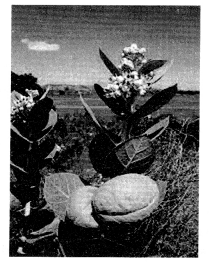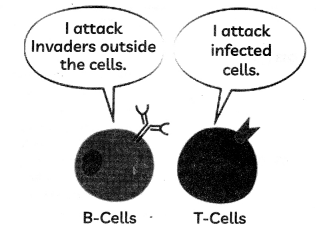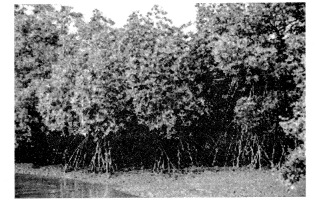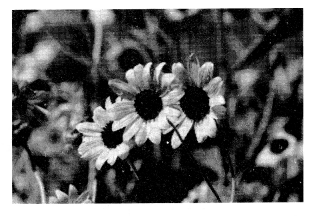Students can access the CBSE Sample Papers for Class 12 Biology with Solutions and marking scheme Term 2 Set 11 will help students in understanding the difficulty level of the exam.
CBSE Sample Papers for Class 12 Biology Standard Term 2 Set 11 for Practice
Time Allowed: 2 Hours
Maximum Marks: 40
General Instructions:
- All questions are compulsory.
- The question paper has three sections and 13 questions. All questions are compulsory.
- Section-A has 6 questions of 2 marks each; Section-B has 6 questions of 3 marks each; and Section-C has a case-based question of 5 marks.
- There is no overall choice. However, internal choices have been provided in some questions. A student has to attempt only one of the alternatives in such questions.
- Wherever necessary, neat and properly labeled diagrams should be drawn.
SECTION – A
(Section A has 6 Questions of 2 marks each.)
Question 1.
(A) Name the fish that help in eradication of mosquito larvae?
(B) Give a scientific term to the disease that jumps from a non-human animal to a human? Give one example. (2)
Question 2.
The given picture shows a Calotropis plant growing in a field, which is said to be not eaten or browsed by cattle and goats. Why is it so? Give reasons.

OR
Write any two adaptations of Cuscuta as a parasitic plant. (2)
![]()
Question 3.
A teacher showed the given picture to explain the difference between the action of B-cells and T-cells.
Mention the site of maturation of B-cells and T-cells. Also, give one difference between them. (2)

Question 4.
(A) Having started working in a research-based organization, Ritesh was confused between the terms genetically modified organisms and transgenic organisms. Are these two terms different or similar? Define them.
(B) There is an increase in the production of recombinant therapeutics worldwide. What is the advantage of using these recombinant therapeutics? (2)
Question 5.
Explain microbial biocontrol with an example.
OR
What do you mean by biofertilizers and why there is a pressure to shift to organic farming? (2)
Question 6.
Name the following:
(A) A species of virus used as biological control agents.
(B) Type of association that the genus Glomus exhibits with higher plants. (2)
SECTION – B
(Section B has 6 Questions of 3 marks each.)
Question 7.
(A) Reema just recovered from typhoid which is a water-borne infection. What measures should be taken to prevent such water-borne diseases?
(B) Why diseases like cholera, dysentery, typhoid, etc, are more common in overcrowded places? (3)
![]()
Question 8.
The mangroves are adapted to the conditions prevailing in Sundarbans as shown in the picture. Name and explain any three adaptations of mangroves.

OR
(A) What are tropical rainforests?
(B) In India many plant species are found in tropical forests. Name any two dominant plant species.
(C) Give reasons, why the soil of tropical deciduous forests is richer in nutrients as compared to tropical rainforests? (3)
Question 9.
(A) Earlier insulin used for the treatment of diabetes was extracted from pancreas of slaughtered cattle and pigs, but such insulin caused allergies in some patients. How this problem was overcome? Explain.
(B) The Ministry of Environment and Forests in India has set up an organization known as Genetic Engineering Approval Committee (GEAC). Write any two objectives of GEAC. (3)
Question 10.
(A) For a cloning vector to be successful in rDNA technology, it must have several desirable properties such as origin of replication, selectable marker, etc. If in an experiment, the chosen plasmid vector lacks a selectable marker, what would be its effect on the experiment?
(B) With the use of rDNA technology, which limitation of traditional hybridization used for plant and animal breeding has overcome? (3)
Question 11.
(A) State what happens when a foreign gene is ligated in the following sites of pBR322 plasmid?
(i) Sail
(ii) Paul
(B) Why alkaline phosphatase enzyme is used in rDNA technology to remove the phosphate group present at the 5’ end of a DNA molecule leaving a free 5’ hydroxyl group? (3)
![]()
Question 12.
Why are some molecules called bioactive molecules? Give two examples of such molecules. (3)
SECTION – C
(Section C has a case-based question of 5 marks.)
Question 13.
Helianthus paradoxus or puzzle sunflower is a threatened species of sunflower as shown in the picture below.
The Puzzle Sunflower with narrow habitat requirements, only occurring in highly saline wetlands within deserts.
These wetlands are continuously threatened by habitat degradation, groundwater withdrawal, competition from non-native species, grazing, and gas exploration.

(A) Helianthus paradoxus is a threatened species of sunflower. What do you mean by threatened species? (1)
(B) Name one endangered species of an Indian medicinal plant. (1)
(C) Define cryopreservation as a method of protection of threatened species. (1)
(D) In India, red list of plant species is prepared by Botanical Survey of India. Where is the headquarters of Botanical Survey of India located and what is its function? (2)
OR
When there is excessive exploitation of species, whether it is a plant or animal, it results in reduction of the size of its population and thus it becomes vulnerable to extinction. For example, Dodo and passenger pigeons have become extinct due to over-exploitation by humans.
![]()
The world is facing accelerated rates of species extinctions, Largely due to human interference.
(A) Name one species have become extinct due to overexploitation in Russia. (1)
(B) Which region of the globe have highest species diversity? (1)
(C) Which regions are termed as hotspots of biodiversity? (1)
(D) List any two causes of loss of biodiversity. (5)